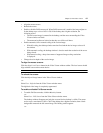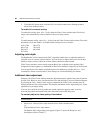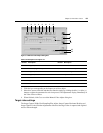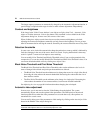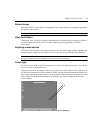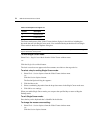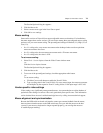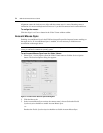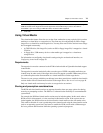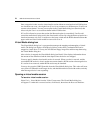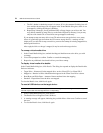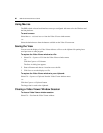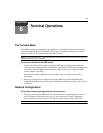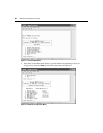
Chapter 5: The Video Viewer 75
NOTE: On supported system configurations, the Avocent Mouse Sync status is Available. If you are using a
USB2 IQ module but the target device cannot support the Avocent Mouse Sync protocol, the status is
Unavailable. If you are not using a USB2 IQ module, the status is Not Supported.
4. Click OK.
Using Virtual Media
The virtual media feature allows the user on the client workstation to map a physical drive on that
machine as a virtual drive on a target device. The client may also add and map an ISO or floppy
image file as a virtual drive on the target device. You may have one CD drive and one mass storage
device mapped concurrently.
• A CD/DVD drive, disk image file (such as an ISO or floppy image file) is mapped as a virtual
CD drive.
• A floppy drive, USB memory device or other media type is mapped as a virtual mass
storage
device.
For information on configuring virtual media settings using the on-board web interface, see
Configuring virtual media on page 50.
Requirements
The target device must be connected to the KVM switch and with an IQ module that both support
virtual media.
The target device must be intrinsically able to use the types of USB2-compatible media that you
virtually map. In other words, if the target device does not support a portable USB memory device,
you cannot map that on the client machine as a virtual media drive on the target device.
The user (or user group to which the user belongs) must have permission to establish virtual media
sessions and/or reserved virtual media sessions to the target device. See
Access levels on page 48.
Only one virtual media session may be active to a target device at one time.
Sharing and preemption considerations
The KVM and virtual media sessions are separate; therefore, there are many options for sharing,
reserving or preempting sessions. The DSView 3 software has the flexibility to accommodate the
system needs.
For example, the KVM and virtual media sessions may be locked together. In this mode, when a
KVM session is disconnected, so is the associated virtual media session. If the sessions are not
locked together, the KVM session can be closed but the virtual media session will remain active.
This could be desirable if a user is performing a time-intensive task using the virtual media session
(such as an operating system load), and wants to establish a KVM session with a different target
device to perform other functions while the operating system load progresses.



